Introduction
Now that the AMD 890GX chipset is out we are seeing all of the manufacturers getting their boards into play. This is to be expected as the 890GX is a great chipset. But as with everything, each manufacturer will have its own method of implementation. Yes, the chipset is the same and the performance is going to be similar, but there are going to be very different feature sets.
Today we take a look at one of the top motherboard manufacturers and their flavor of 890GX motherboard. This is the GA-890GPA-UD3H; it features what GIGABYTE likes to call their 333 onboard acceleration. This is the combination of SATA 3.0, USB 3.0 and Power 3X. GIGABYTE rolls this and much more up into a package that costs a shave under $140 at Newegg.com.
Can these features and price combine to make the 890GPA-UD3H a contender in the 890GX space? Let's dive in and see.
The Box and What's Inside
The GA-890GPA-UD3H comes in a slim box with the usual jumble of images on it. The front of the box shows off the "333" log just so you know that you are getting this GIGABYTE technology when you pick up this product. GB has also highlighted some other items that come with the 890GPA-UD3H such as the Ultra Durable 3 (complete with 2 ounces of copper), DDR3-1866 support (with overclocking), 4+1 phase power and full 1080P and Blu-ray support.
The back of the box is more of the same, but with a deeper explanation of the major items of interest. Although the box is a little tacky to my tastes, there is no doubt that it is eye-catching and has enough information on the outside to get this from the shelf and into your cart.
Inside the box is a limited amount of gear. It is more than enough to get you going, but it lacks a couple of items that might come in handy for future upgrades or a more advanced user.
The Motherboard
The 890GPA-UD3H simply looks chaotic. It is cramped and cluttered. As we have mentioned before, much of this cannot be helped, but some of it certainly can and should be worked on.
Looking at the upper half of the board, we see the AM3+ socket and the now familiar plastic hold down for the stock AMD cooler. One thing you will notice is how close the RAM slots are to the CPU socket. In practice this limits the use of larger coolers (unless you do not want to use all RAM slots). In fact, our standard cooler, the Cooler Master Hyper 212+, would obscure the first two RAM slots when we used both fans.
The next item of note is that notorious problem with the placement of the 8-pin aux power connector. This connector is an unfortunate necessity, but it also has to be located very near to the CPU. This gives limited room to move around. Still, even with that GB has chosen an awkward slot to place the one on the 890GPA-UD3H. This is even more so true once you get the 890GPA into a case.
At the lower half of the board is another interesting item. For some reason GB still likes to put a single x1 PCIe slot right in-line with the Northbridge heatsink. To me (and many others) this is a pointless place to put a slot. It is true that you can get more than one PCIe x1 card that is short enough not to intrude here, but I would not want a normal sized card here, especially if I wanted to use a discrete GPU with this board.
Also nestled down on the lower half is the SB850 and eight SATA ports available on the board.
The back panel I/O ports are what you would expect from an 890GX based board with the stock two USB 3.0 ports, DVI, VGA and HDMI.
As you can see, the 890GPA-UD3H is a cramped and cluttered board. If you are going for an entry level build none of this comes into play, but if you are looking at a higher end system with discrete graphics and other add-in boards for peripherals (like audio) then you might have a few issues.
BIOS and Overclocking
BIOS
The GIGABYTE GA-890GPA-UD3H uses an Award BIOS, which has a fairly clean layout. For the most part you will be spending your time in the M.I.T. (Motherboard Intelligent Tweaker) section. This area gives you all of the most common settings to improve performance.
One of the first places you might want to head is to take a look at the IGP (internal graphics processor). Here is where you can push the HD 4290 embedded in the 890GX. You have different options for memory performance as well as the ability to overclock the actual GPU.
Under the DRAM settings menu you can adjust the timings as well as setup ganged or unganged modes for memory performance stability. Although the timings here show manual settings, the only settings we adjusted for our review were the four major ones to match the stated timings on the Kingston DDR3 (9-9-9-24). The rest we set to auto.
Other areas of interest are the integrated peripherals and advanced BIOS features menu. Interestingly enough there is another link to the IGP (which AMD calls the IGX).
Overclocking
When the 890GX launched we only had a C2 stepping version of the Phenom II X4 955. This limited our overclocking in a very serious way. We were not able to hit over 3.6GHz (227x16). The CPU simply would not do it.
This time things are different; we have a C3 stepping Phenom II X4 965. This new CPU allowed us to hit a fairly decent 4.08GHz on air (240x17). Over that we found that highly threaded loads (like Cinebench R11.5 and LightWave) would fail in a spectacular way. We are looking into the reasons for this as we feel we should be able to get higher levels of performance from the 890GX and this board.
You can see the validation for our overclocking here.

As is now a common practice, GB has their own Windows based overclocking tool; they call this Easy Tune 6. The layout is fairly well done and when we tested it out we got quite a bit of flexibility in what settings we could tinker with. One feature that I particularly like is the temperature monitor page. It allowed me to keep track of the X4 965 while I had it up at 4.08GHz.

As all overclocking results are dependent on the hardware you use, your results may vary.
Results of our overclocking tests are included in the performance section with the stock scores.
Important Editor Note: Our maximum overclocking result is the best result we managed in our limited time of testing the motherboard. Due to time constraints we weren't able to tweak the motherboard to the absolute maximum and find the highest possible FSB, as this could take days to find properly. We do however spend at least a few hours overclocking every motherboard to try and find the highest possible overclock in that time frame. You may or may not be able to overclock higher if you spend more time tweaking or as new BIOS updates are released. "Burn-in" time might also come into play if you believe in that.
Test System Setup and Comments
Test System
Processor: AMD Phenom II X4 965 (C3 Stepping)
Mainboard GIGABYTE 890GPA-UD3H (Supplied by GIGABYTE)
Memory: 4GB Kingston KHX12800D3T1K3/6GX (Supplied by Kingston)
Hard Disk: Kingston SSD Now M (Intel X25-M 80GB SSD) (Supplied by Kingston)
Graphics Card: AMD Radeon HD 5870 1GB (Supplied by AMD)
Cooling: Cooler Master Hyper 212 (with an extra fan) (Supplied by Cooler Master)
Operating System: Microsoft Windows 7 Ultimate x64
Drivers: AMD Catalyst 10.3
Comments
The GIGABYTE 890GX is an interesting board, but I found it a little cramped to be perfectly honest. The placement of the 8-pin aux was not very good. It was difficult to get this plugged in even on the open test bench that I use.
I also had a few odd issues with getting into the BIOS while using a USB keyboard and mouse. For some reason I had to hit a very small window that only opened once the POST screen was visible. This window was only open until the splash screen went away. So if I was not hitting the Del key right away I was not getting into the BIOS.
Synthetic Tests - Part I
With any system you will want to see a combination of synthetic testing and real-world. Synthetics give you a static, easily repeatable testing method that can be compared across multiple platforms. For our synthetic tests we use Everest Ultimate, Sisoft Sandra, Futuremark's 3DMark Vantage and PCMark Vantage, Cinebench as well as HyperPi. Each of these covers a different aspect of performance or a different angle of a certain type of performance.
Memory Bandwidth
Memory is a big part of current system performance. In most systems slow or flakey memory performance will impact almost every type of application you run. To test memory we use a combination of Sisoft Sandra, Everest and HyperPi 0.99.
Sisoft Sandra
Version and / or Patch Used: 2010c 1626
Developer Homepage: http://www.sisoftware.net
Product Homepage: http://www.sisoftware.net
Buy It Here

Unfortunately at some point in time AMD lost the memory bandwidth war to Intel. This is very evident by the numbers we have seen on both 890GX boards we have tested so far.
I hope that we do see them come back in this area, though, as with the limited cache on the AMD CPUs this is a serious performance hindrance.
Everest Ultimate
Version and / or Patch Used: 5.30.1983
Developer Homepage: http://www.lavalys.com
Product Homepage: http://www.lavalys.com
Buy It Here
Everest Ultimate is a suite of tests and utilities that can be used for system diagnostics and testing. For our purposes here we use their memory bandwidth test and see what the theoretical performance is.

Stock Memory Performance

Overclocked Memory Performance
Everest backs up our observations from Sandra.
HyperPi 0.99
Version and / or Patch Used: 0.99
Developer Homepage: www.virgilioborges.com.br
Product Homepage: www.virgilioborges.com.br
Download It Here
HyperPi is a front end for SuperPi that allows for multiple concurrent instances of SuperPi to be run on each core recognized by the system. It is very dependent on CPU to memory to HDD speed. The faster these components, the faster it is able to figure out the number Pi to the selected length.
For our testing we use the 32M run. This means that each of the four physical and four logical cores for the i7 and the four physical cores of the i5 is trying to calculate the number Pi out to 32 million decimal places. Each "run" is a comparative to ensure accuracy and any stability or performance issues in the loop mentioned above will cause errors in calculation.

Here we find an interesting combination of problems. The HDD speed issue (about 15-20MB/s slower than on an ICH10) combined with lower memory bandwidth brings our HyperPi times to a crawl. This is not a problem limited to the GIGABYTE board, but is something we have seen across the board with AMD CPUs. But there is hope as AMD works to correct some of the issues in the current design.
Synthetic Tests - Part II
Disk Drive Controller
The system drive controller is an important part of system performance. In most modern boards your drive controller will run off of the PCI-e bus. The PCI-e bus performance can be affected by poor trace layout as well as many other design choices that show up on different boards.
For testing we use Sisoft's Sandra and Everest.
SiSoft Sandra

As we have mentioned before, the AMD SB850 has slightly slower HDD performance than Intel's ICH10 or even the external Marvell SATA 3.0 controller.
USB 3.0 performance is pretty much identical to the Intel boards as everyone is using the same NEC based solution.
Everest
Stock HDD Performance
Overclocked HDD Performance
Stock USB 3.0 Performance
Overclocked USB 3.0 Performance
Again the same numbers pop-up through our Everest testing.
Synthetic Tests - Part III
Here is where we dig out the FutureMark tests.
PCMark Vantage
Version and / or Patch Used: 1.0.0.0
Developer Homepage: http://www.futuremark.com/
Product Homepage: www.futuremark.com
Buy It Here

The PCMark Vantage scores for the GA-890GPA-UD3H are a little bit of a letdown until we push the CPU to 4GHz. At that point we see it and the X4 965 pull ahead of the Core i5 661 on the H57.
3DMark Vantage
Version and / or Patch Used: 1.0.1
Developer Homepage: http://www.futuremark.com/
Product Homepage: www.futuremark.com
Buy It Here
For synthetic gaming tests we used the industry standard and overlockers bragging tool 3DMark Vantage. This is a test that strives to mimic the impact modern games have on a system. Futuremark went a long way to change from the early days of graphics driven tests to a broader approach including physics, AI and more advanced graphics simulations.
3DMark Vantage uses the DX10 API in addition to having support for PhysX. Due to the PhysX support and our use of an NVIDIA GPU, we run with PhysX enabled and disabled to give you the best indication of real system performance. For testing we use the Performance test run.

Unfortunately the 890GPA-UD3H and its HD 4290 are not able to keep up in 3DMark Vantage. It is not by a large margin, but it is still there.
Cinebench R11.5 x64
Version and / or Patch Used: R11.5
Developer Homepage: http://www.maxon.net/
Product Homepage: www.maxon.net
Download It Here
Cinebench is a synthetic rendering tool developed by Maxon. Maxon is the same company that developed Cinema4D, another industry leading 3D Animation application. Cinebench R10 tests your systems ability to render across a single and multiple CPU cores. It also tests your systems ability to process OpenGL information. Beginning with this review we are moving to the new R11.5 version of Cinebench. This software improves both the GPU based OpenGL rendering test and the CPU based image render. It provides a much better test for multi-core, multi-threaded CPUs and once again changes the scoring routine.

Our scores are interesting and something that has become a pattern is showing up by now. With a discrete GPU in the system it seems that overall board performance is suffering. This has been a common trend so far in our testing and again is showing up in Cinebench R11.5.
Real-World Tests - Part I
Real-world testing allows us to see how well a product will perform when used in the same manner as it would be in your house or office. It is an important side to performance testing as it can uncover hidden glitches in the way a product performs.
It is especially true when testing a mainboard; there are so many components of a board that have to interact that any problems between parts can cause a failure of the whole.
For real-world testing we use some common applications and functions. We test with LightWave 3D for rendering performance, AutoGK for transcoding from DVD to AVI and two games for gaming testing.
Rendering
Rendering of 3D Animation is a system intensive endeavor. You need a good CPU, memory and HDD speed to get good rendering times. For our testing we use LightWave 3D. This software from Newtek is an industry standard and has several pre-loaded scenes for us to use.
LightWave 3D
Version and / or Patch Used: 9.6
Developer Homepage: http://www.newtek.com
Product Homepage: http://www.newtek.com/lightwave/
Buy It Here

Here our LightWave times with Perspective Cameras are where we have seen other AMD CPUs at this speed. They are good for the X4 965, but not great overall.
AutoGK
Version and / or Patch Used: 2.55
Developer Homepage: http://www.autogk.me.uk/
Product Homepage: http://www.autogk.me.uk/
Download It Here
AutoGK stands for Auto Gordian Knot; it is a suite of transcoding tools that are compiled into an easy to install and use utility. It allows you to transcode non-protected DVDs and other media to Xvid or Divx format. For our testing purposes we use a non-DRM restricted movie that is roughly 2 hours in length. This is transcoded to a single Xvid AVI at 100% quality.

As AutoGK and indeed any form of transcoding is highly HDD and memory dependent, we were not surprised to see the slower performance here. However, it is right in line for the other 890GX boards we have tested.
Real-World Tests - Part II
Here we have our real gaming tests. Each of the games we chose use multiple cores and GPUs. They are able to stress the system through use of good AI. Both have decent positional audio that adds impact to the sound subsystem of the board. We ran each game through the level or parts listed and recorded frames per second using FRAPS. This brings the whole game into play.
As most IGPs are not meant for high-end gaming we have swapped out one of our First Person Shooters for a more mainstream game. We have also adjusted down the testing resolution from 1920x1200 to 1280x960. In order to keep full measure of the board we return to 1920x1200 when we test the board with our GTX-285.
SIMS 3
Version and / or Patch Used: 1.0
Timedemo or Level Used: Ten Minutes of Game Play in Sunset Valley
Developer Homepage: http://www.ea.com/
Product Homepage: http://www.thesims3.com/
Buy It Here
The SIMS 3 is the third complete edition of this popular game. In it you create a personality for use in a virtual world. The town we chose was Sunset Valley; we created a basic character and off we went. We performed as many actions as we were able to in order to give the board and GPU as much to think about as we could. The settings we used are shown below.
Settings for IGP testing at 1280x960
Settings for the HD 5870 testing at 1920x1200

The HD4290 is not powerful enough to run the SIMS 3 at our standard resolutions and settings. If we drop them down or push the GPU we might see a better showing, but that, as they say, is for another article.
Far Cry 2
Version and / or Patch Used: V1.00
Timedemo or Level Used: Clearing the Safe house through to the Rescue
Developer Homepage: http://www.ubi.com
Product Homepage: http://farcry.us.ubi.com
Buy It Here
Far Cry 2 is a large sandbox style game. There are no levels here so as you move about the island you are on you do not have to wait for the "loading" sign to go away. It is mission driven so each mission is what you would normally think of as the next "level".
In the game you take the role of a mercenary who has been sent to kill the Jackal. Unfortunately your malaria kicks in and you end up being found by him. Long story short, you become the errand boy for a local militia leader and run all over the island doing his bidding. The settings we used for testing are shown below.
Settings for IGP testing at 1280x960
Settings for the HD 5870 testing at 1920x1200

As we all know, there is no IGP (or IGX) that can handle Far Cry 2 at anything approaching playable resolutions. We could reduce everything down and have a horrible mass of blocks on the screen, but at that point would it be worth it?
Gaming Conclusion
As we have noted before, the AMD HD 4290 is not up to par for mainstream gaming. You might be able to get a few more FPS if you overclock the GPU, but unfortunately that is a risky proposition.
GIGABYTE's 890GX shows us performance in line with the ASUS 890GX and in fact has a 1-2 FPS edge on the ASUS. Still, if you are looking to game at all you will want to spend the extra cash and pick something like a HD 5670.
Power Usage and Heat Tests
Power Consumption
We are now able to find out what kind of power is being used by our test system and the associated graphics cards installed. Keep in mind; it tests the complete system (minus LCD monitor, which is plugged directly into an AC wall socket).

Okay, something is wrong here. The GB board is pulling significantly more than we would have expected, even with the Phenom II X4 965 in place.
Heat Generation
As a new measure, we are now monitoring the heat generation from the key components on the motherboard; this being the Northbridge, Southbridge (if it contains one) as well as the Mosfets around the CPU. The results are recorded at idle and load during the power consumption tests.

Heat is not too bad on the GB 890PGA-UD3H. It was even under control when we dropped in the HD 5870.
Final Thoughts
The 890GPA-UD3H is an okay board. I actually was expecting more from it, but I was a little disappointed. The layout was not that great and needs to be re-thought in future models. I am not sure why they continue to put the x1 slot up and over the NB heatsink, but they still are doing this.
There were a few performance issues that I did not understand with the 890GPA either. We saw decreased performance almost across the board when we have a discrete GPU in the system. I would not have expected this at all and we are working to try and find out the reasons behind this problem. As noted, there were some minor annoying problems at startup as well, but nothing too serious.
Overall, the GA-890GPA-UD3H is not a bad board, especially with its $140 price tag, but GIGABYTE has some work ahead of it to optimize the BIOS so that some of the issues we saw are lessened or removed completely. However, at the time of this writing we really cannot recommend it if you are interested in the 890GX chipset.

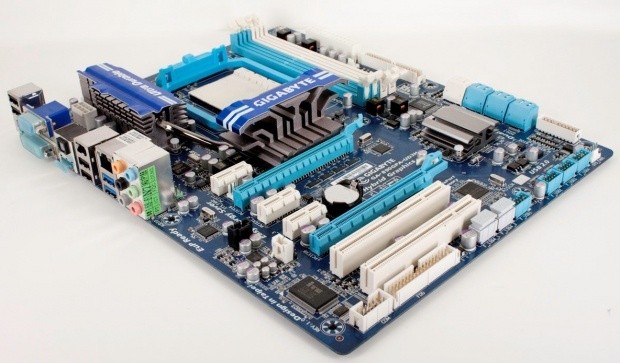
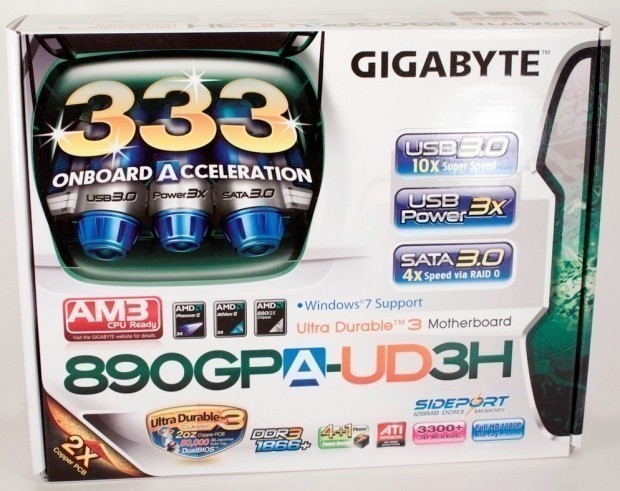


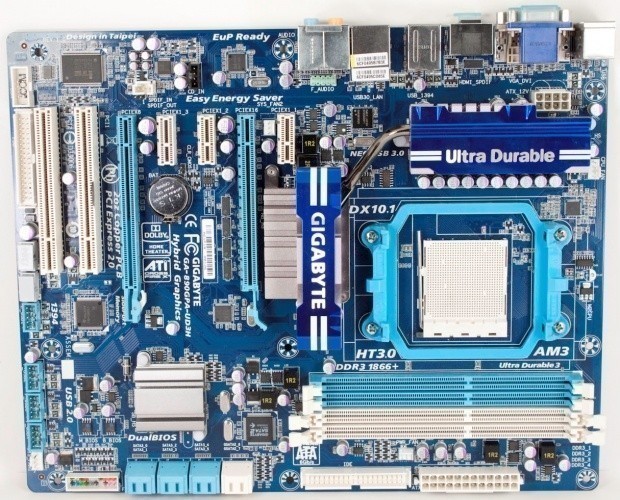
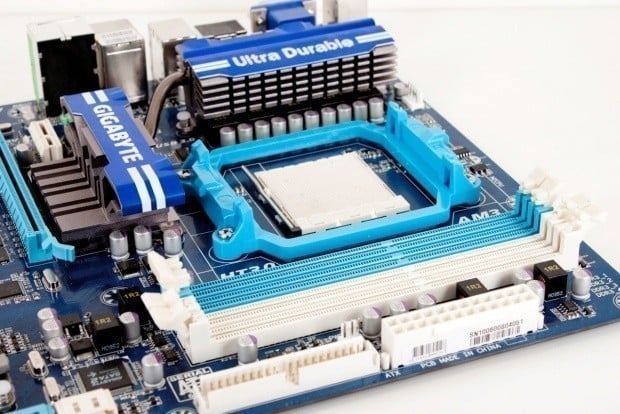

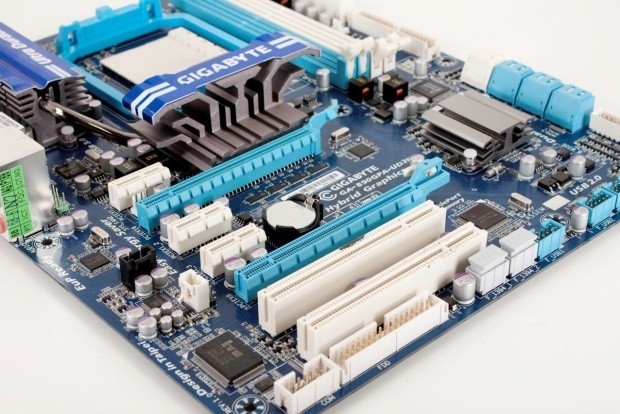


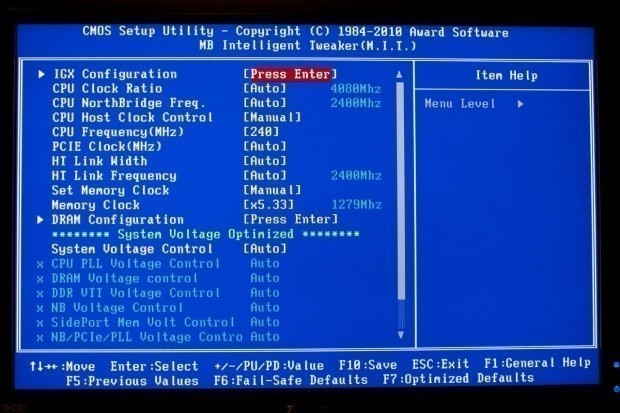
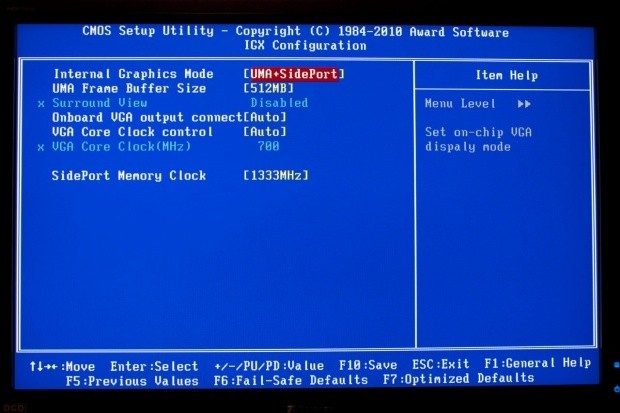
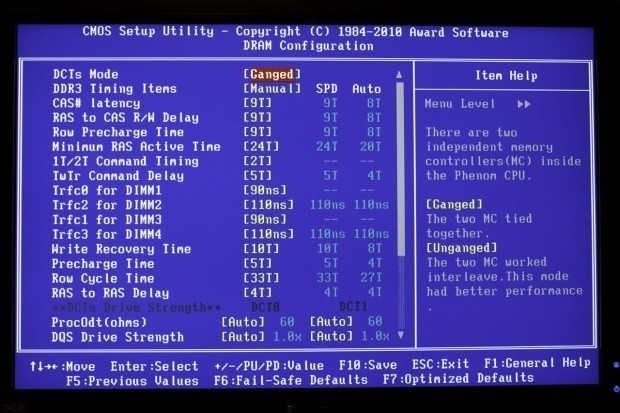

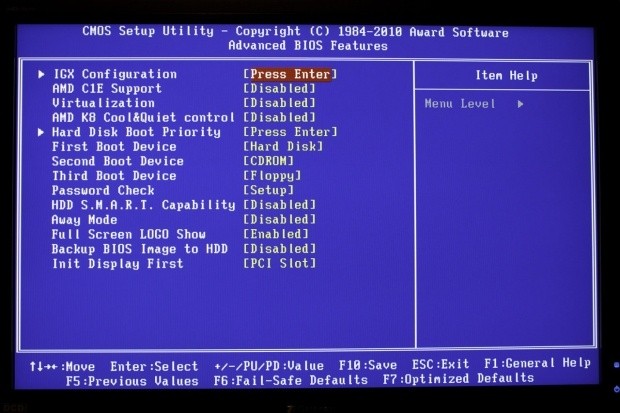











 United
States: Find other tech and computer products like this
over at
United
States: Find other tech and computer products like this
over at  United
Kingdom: Find other tech and computer products like this
over at
United
Kingdom: Find other tech and computer products like this
over at  Australia:
Find other tech and computer products like this over at
Australia:
Find other tech and computer products like this over at  Canada:
Find other tech and computer products like this over at
Canada:
Find other tech and computer products like this over at  Deutschland:
Finde andere Technik- und Computerprodukte wie dieses auf
Deutschland:
Finde andere Technik- und Computerprodukte wie dieses auf